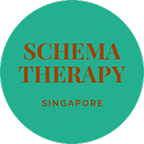
ABOUT OUR APPROACH
Schema Therapy
Schema Therapy has been extensively researched and shown to be significantly more effective than traditional treatments for a wide variety of typically treatment resistant conditions and a broad range of personality disorders, contributing to real recovery, not just symptom reduction.
Schema Therapy suggests that schemas (broad, pervasive, self-defeating, core themes or patterns regarding oneself and one’s relationship with others) develop during childhood when a child’s important, core emotional needs are not met in the child’s relationships.




Schemas are then elaborated throughout one’s life, leading to unhealthy life patterns and are dysfunctional to a significant degree: We distort our view of the events in our lives to maintain our schemas, and our schemas interfere with our attempts to get our needs met. We keep repeating this throughout our lives; however, schemas may remain dormant until they are activated by situations relevant to that particular schema.
In addition, to adapt to the damaging childhood experiences, a child may engage in various Coping Styles.
Schema therapy also put forth the existence of Schema Modes: the moment-to-moment emotional states and coping responses that we all experience. Our maladaptive schema modes are triggered by life situations that we are oversensitive to (our “emotional buttons”). Many schema modes lead us to over or under react to situations and, thus, to act in ways that end up hurting us or others.

The goal of schema therapy is to help clients get their core emotional needs met.

Key steps in accomplishing this involve learning how to:
- Stop engaging in and incorporate reasonable limits for maladaptive coping styles and modes
- Heal schemas and vulnerable modes through getting needs met in and outside of the therapeutic relationship
- Fight punitive, overly critical or demanding schemas and modes
- Build healthy schemas and modes
DISCOVER MORE
EXTERNAL LINKS




